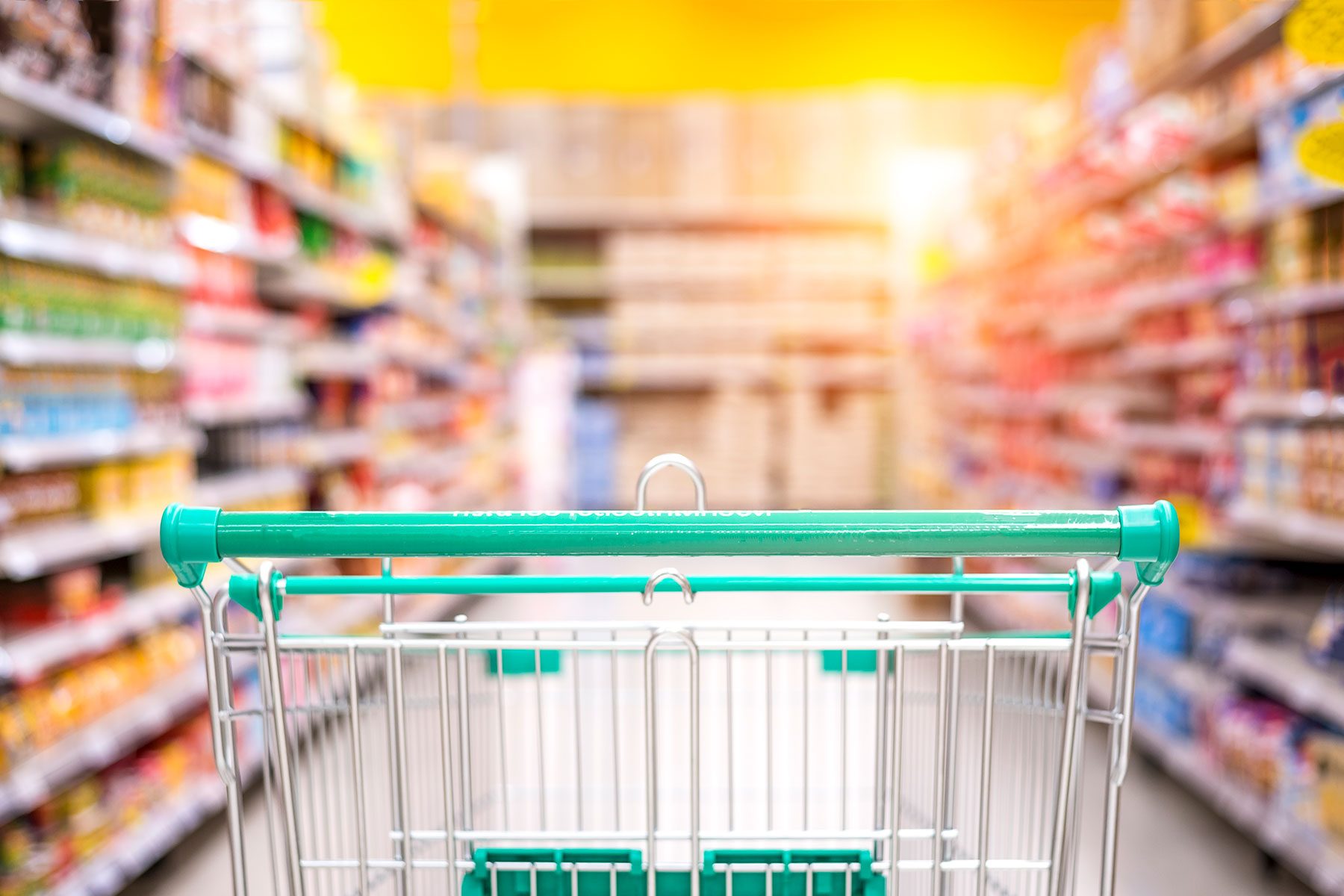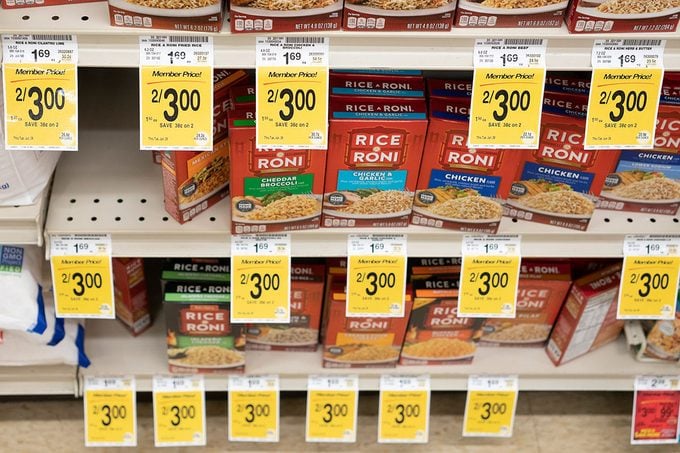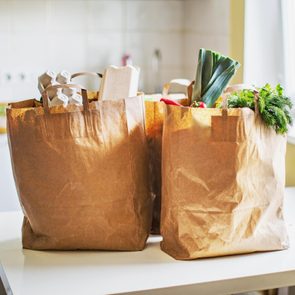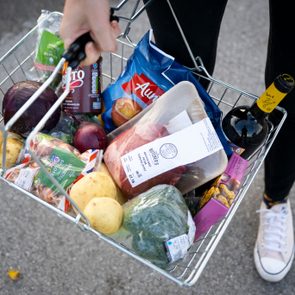A good deal is tempting, but these sales are a scam.

These Are the Labels You Should Avoid at the Grocery Store

It’s an unfortunate truth right now that many goods, from cars to clothes, are getting more expensive. And as many of us are looking for painless ways to save money, it’s normal to turn to shopping for on-sale items.
However, some of these sales may not be as lucrative as they first appear. This is the case with one particular type of sales label used at grocery stores these days. Read on to ensure you can spot this label and evade its gimmicky tricks. Then, be sure to check out some of our favorite money-saving tips to help soften the blow of that grocery bill.
What sales labels are gimmicks at the grocery store?
Sometimes grocery stores will advertise sales for multiples of one particular item. They often look like excellent bulk deals, advertising sales such as “3 for $3!” or “10 for $10!” on items such as individual candy bars or single-serve bottled drinks. While it is often cheaper to buy certain goods in bulk, these sales are often not as good as they seem.
Why are these sales labels so deceptive?

The basic problem with these sales labels is that they make you think you need to buy large quantities of the item in order to get the deal. In reality, you likely only need to buy one item to get the savings. Don’t be tricked into buying 10 candy bars when you really only want one!
How can I check if the sales labels are legit?
There are a few different ways you can check to see how many items you need to purchase to score a deal. First things first, try to read the fine print on the sales signs to check the facts. If that doesn’t work, speak directly with a grocery store employee; they should be able to tell you the requirements of the sales.
How can I score real savings at grocery stores?
One of the first and easiest ways to save money on groceries is to avoid grocery store items with the highest markups. From there, try to shop seasonally as much as you can, as these items are more readily available and therefore less expensive. Additionally, you can always sign up for your grocery store’s app or newsletter to receive special discounts and coupons.
Source:






















